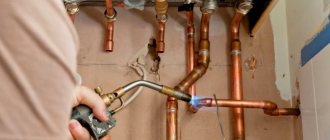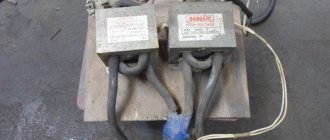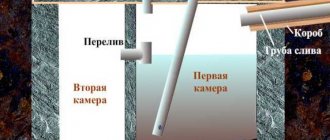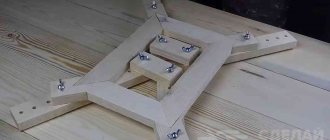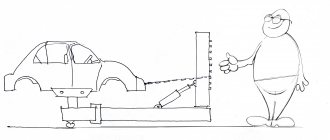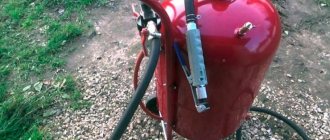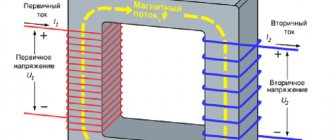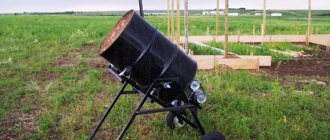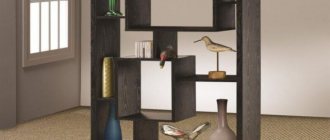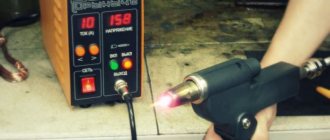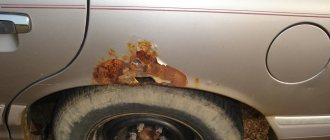Carrying out work on straightening a car body often comes down to more than just basic skills in working with standard tools. Almost always you will need knowledge of design features, the geometry of body parts, and maintaining banal accuracy plays an important role. Even if you have very rich experience and knowledge in this matter, you will need to use a special tool, which is a spotter.
Spotter - general information
This word is used all over the world to describe all types of resistance welding tools (from the English spot - “point”). In the former post-Soviet space, this is the name given to single-sided welding machines used for repairing body surfaces of various types of vehicles, and the set of which includes a reverse hammer. The main purpose of using a spotter is to eliminate the need to replace a damaged part and instead carry out spot repairs, which allows you to save on running costs.
Any professional straightener knows that spot welding is indispensable for complex body geometry. Using this tool, the surface on the machine is processed in any place, regardless of inaccessibility. Working with the tool is quite simple and does not require long training - that is why the devices have become widespread.
The device, in fact, is universal - it is well suited for straightening body parts, such as: hood, sills, doors, fenders, etc. The main function of the device is to create a straightening force with fixation on the outside of the part.
The purpose of the spotter and its features
A homemade spotter is used for car body work. This is done when, for some reason, to level the surface of the part .
You can locally heat the metal using the specified tool if there is minor damage to the body area. It is important to figure out how to make a spotter with your own hands in order to get a high-quality and functional product. The welding process looks like this.
Fasteners are fixed in place of the damaged metal. A device is connected to it and the dents are pulled out using auxiliary devices or with your own hands. The body repair tool makes it possible to quickly and efficiently restore a car without painting the damaged area. The good thing about a spotter is that during its operation it is possible to keep the functioning of every part under control. This is due to the fact that the likelihood of overheating and breaking the wires is quite high.
Operating principle and device
In a nutshell, a spotter is used to heat up a small area of a body element that needs to be freed from deformation unforeseen by the design. In this case, minimal damage is caused to the car itself.
The simplest spotter tool consists of:
- Housings;
- Electrical cable;
- Stadder attachments;
- An ordinary electrode (it can be replaced with a pointed tip).
Any casing that is safe enough when performing work can act as a housing. You can make a spotter yourself, but such a device is unlikely to cope with long-term operating conditions - only factory models are suitable for this.
The welding procedure includes the following steps:
- A fastening element is attached (welded) to the damaged area;
- The return hammer of the device clings to the latch;
- Pulling is done using the muscular strength of a person, but sometimes additional tools are used.
The processing process itself does not require any special effort and straightening can be carried out in a standard garage.
How to weld parts using a spotter
Spot welding with a spotter
Welding technology using a spotter is divided into the following stages:
- The central part of the concave surface area is cleaned down to bare metal and degreased.
- The ground cable is connected to the car body.
- Fastening elements - mounting washers or the electrode itself - are placed in the center of the dent.
- The required number of welding pulses is given to reliably weld the fastener.
- The concave section is pulled out with a reverse hammer or hoists.
- Fasteners are removed from the surface using twisting movements.
- The straightened surface is thoroughly cleaned and prepared for putty.
Whether the spotter is purchased in a store or assembled with your own hands, it will be your faithful assistant in body work, especially in cases where it is impossible to get to the dent from the back side.
If you find an error, please select a piece of text and press Ctrl+Enter.
>
Types of spotters
In total, there are two main types of tools: transformer and inverter. Depending on the method and area of use, two more classes are distinguished: for welding the body using the contact method and for straightening.
Straightening spotters are small devices designed for small work. They require the installation of a reverse hammer and additional attachments to perform repairs. In addition, the design may include special pliers. However, many of these devices have low power, are prone to rapid overheating, and therefore are not able to provide high-quality welding.
In addition, spot welding equipment can be classified according to the power supply voltage consumed from the electrical network. Standard tools are designed for 220V, and the most powerful ones are designed for 380V.
Main components for assembly
To assemble and test a homemade spotter, you need the following components and consumables:
- Frame. Sheet metal box structure with front and back panels. Ventilation holes and a ground terminal are required.
- Power supply. In its simplest form, it is a do-it-yourself transformer with a circuit breaker in the primary circuit.
- Power cables. The welding cable must have a terminal for connection to power and a threaded contact for connection to the gun, and the ground cable must have a terminal and contact pad for welding connection to the body part.
- Control circuit. The minimum version includes a switch button on the gun, an input voltage cut-off relay, control wires and a control circuit power supply.
- Welding gun. At one end there is a contact threaded connection for connecting electrodes and adapters, and at the other there is a socket for connecting a welding cable.
- Equipment. The basic version includes electrodes for washers and pins, a return hammer and an adapter for connecting a carbon electrode.
Assembling a reverse hammer (inopuller) with your own hands
In order to assemble a reverse hammer with your own hands, you need the following parts:
- steel rod 60 cm long, 17 mm in diameter, with threads on both ends;
- steel bushing with a through hole with a diameter of 15 mm, a length of 15 cm and a diameter of 40 mm;
- return spring;
- travel stop nuts and washers;
- adapters for attaching electrodes.
First, a washer is put on the end of the rod intended for fastening into the gun and the nut is tightened tightly. The rod is then passed through the bushing and return spring. The final step is to attach a washer and nut to the bottom threads, and then screw on the electrode adapter. During operation, the massive bushing will be repelled by the spring and perform reciprocating movements between the two washers.
Making a working pistol
Branded spotter pistols are usually produced in the form of devices with a pistol grip. Much of what folk craftsmen make with their own hands can only conditionally be called a “pistol.” Often it is just a cylinder with a button and a terminal for connecting a cable at the end. This is because the spotter gun consists of only three parts: the body, the contact rod and the switch. The contact rod is usually made of brass. At one end there is a thread for attaching a reverse hammer, and at the other there is a clamp for connecting power. For those who make such devices with their own hands, whether to place it in a pistol case or use it as is is a matter of personal preference. At the same time, despite the low welding voltage, it must be insulated: these are the requirements of safety regulations.
Transformer for spotter
Any transformer is suitable for making a power source for a spotter. Videos of the manufacture of spot welding machines based on transformers of microwave ovens and other household appliances are distributed on the Internet.
At the same time, the authors of these crafts do not inform what current their devices are designed for, and this is very important, because
The penetration of the metal surface during operation of the spotter should occur in a fraction of seconds, without appearing in any way on the back side of the part. Factory devices have a power of 3÷5 kW with an open circuit voltage of 7÷8 V (welding voltage - 1.5÷2 V).
For a spotter assembled by yourself and intended only for body repairs, a power of 1.5÷2 kW is sufficient. It is not difficult to calculate how many turns there should be in the secondary winding of a transformer. To do this, the number of turns of the primary winding (new) must be divided by the quotient of 220 divided by 7 ÷ 8. Usually it turns out just a few turns.
Control unit diagram
There are quite a lot of electronic circuits on the Internet that are labeled as spotter control units. Some of them refer to industrial designs of spot welding installations (including old ones), others are replete with electronic components and have redundant parameters, and a number of circuits are not at all related to our topic. Many of the proposed devices implement adjustments to the open circuit current and voltage, as well as control of the duration of the welding pulse. Their manufacture requires a certain skill, and the parts used are not that cheap. Choosing one of these schemes is advisable if you plan to make a spotter for commercial use in a small auto repair shop. And for devices that are made by hand and used at home, there are simpler solutions.
Detailed usage procedure
The work of smoothing out the dent begins with current being supplied to the electrode from the welding machine. For straightening, a reverse hammer is used, which can be replaced with a pointed stop. Impacts on the deformable surface must be carried out until it is completely leveled. Upon completion of all operations, the processing area must be cleaned, as electrode slag remains on it.
The algorithm for straightening work includes the following steps:
- Preparation of the surface to be treated (regardless of the body material - aluminum or iron), by removing any coating from it, be it putty, paint layer, primer;
- Connecting the “negative” terminal from the device to the vehicle body for grounding purposes;
- Installation of fasteners by welding various fastening devices (loops, hooks and hooks) to the place of deformation, by performing spot welding;
- Equipment preparation – the tool base and additional equipment are coupled (at this stage it is convenient to use a puller);
- Straightening an element, i.e. stretching it in order to restore its original appearance;
- Dismantling fasteners - banal removal of fastening means (usually using a “grinder”);
- The final stage is grinding, during which the surface is cleaned and preparatory work is carried out for subsequent painting.
To perform the above algorithm, minimal knowledge of working with a welding machine is sufficient. If the spotter is equipped with a set of attachments, this will allow you to work with any fastener elements.
Inopuller reverse hammer for homemade spotter
A craftsman who has made a spotter with his own hands will be quite capable of making a reverse hammer. Store-bought inopulrs are expensive, so the time spent should be worth it.
The main donor of parts will be a mounting gun for sealant, liquid nails and other things in 310 ml tubes. The part of the gun where the tube is inserted needs to be cut off with a grinder or a hacksaw; you only need a rod feed mechanism and a handle. On the remaining platform, we weld three rods or fittings with a diameter of 0.6-1.0 millimeters diverging at a slight angle at equal distances from each other - these will be the thrust posts of the reverse hammer. The same material will be used for a ring with a diameter of about 10 cm, to which the ends of the thrust posts must be welded. The ring should be thoroughly cleaned and wrapped with tape or thick twine to prevent both welding of the ring to the surface being repaired and additional mechanical damage to it.
The rod should be cut off on both sides, and a bolt with two nuts should be welded to it on one side. This will be the terminal for the cable leading to the stopper. The other side, the one where the stop for the tube was, must be sharpened on a sharpening stone so that the diameter of the flat tip is approximately 3 millimeters. Even a not very experienced home craftsman can complete this task with his own hands in a couple or three hours, of course, if he has the necessary tools and equipment.
The last point in the configuration of the spotter is the mounting washers, fasteners welded to the straightened surface by spot welding.
Removing small dents
Despite the similarity of the work algorithms, all work on a small scale has some differences, namely:
- For pulling, a single fastener is fixed;
- Cleaning is carried out only at the site of damage; it is better not to touch the surrounding area;
- The perimeter of the treated area is covered with special (preferably masking) tape so as not to destroy the surrounding paint;
- Straightening is carried out without the use of much effort, again, to avoid damage to the part as a whole.
It may be necessary to use additional attachments.
Repairing deep damage
To eliminate such deformations, large-scale actions will be required, the distinctive features of which will be:
- Welding more fasteners in places of more severe damage;
- The drawing is done more slowly - little by little you need to pull out each element “in a circle”. If one area is completely leveled, then when moving to another the previous result may be destroyed;
- The reverse hammer is used in large sizes, however, heavy blows should still be avoided due to the risk of damaging the fasteners.
Functional orientation of factory-made spotters
Their useful properties include:
- They interact perfectly with repair washers during straightening;
- The metal electrode maintains the connection on a permanent basis for subsequent rapid transition to operations;
- Works great with graphite electrodes;
- Comfort in use and ease of maintenance;
- Support switchable operating modes: long-term and short-term. In the first case, a metal electrode is used, or repair washers are generally used. In the second case, a carbon electrode is installed;
- They have their own cooling system that will automatically turn off the device if it overheats.
Standard characteristics of serial spotters
These include the following variations:
- Power supply type – 220 V/380 V network;
- AC frequency – 50-60 Hz;
- Maximum power – 10 kW;
- When welding, the maximum current reaches 1300 A;
- The voltage generated on the secondary winding is 8-9 V;
- The built-in timer can be set from 0.1 to 1.2 seconds;
- They have the ability to switch welding modes from spot to constant;
- The performance of the device depends on the selected program - with precision, the device operates at maximum power, and with coal welding, the output power is minimal;
- Through the iron electrode, the breaking force is more than 100kg;
- When installing a repair washer, the pulling force is more than 100 kg.
Diagram of a spotter based on a welding machine
For a craftsman who has minimal skills in electrical engineering and uses a self-assembled device to repair his own vehicles and the cars of friends, a device based on an old medium-power welding transformer with a simple control unit is quite sufficient.
In this case, the best option is a spotter control system made from simple and accessible parts, the diagram of which was published in the “Modeler-Constructor” magazine (see below).
Spotter circuit
The author uses a serial welding transformer with a power of 1 kW with a primary winding of 200 turns (any other one with similar characteristics can be used). He replaced the secondary with two parallel windings of 3 turns with a total cross-section of 100 mm².
The calculated open circuit voltage according to this circuit is approximately 6.5 V. S1 is the input circuit breaker of the device. S2 is a shutdown button, when closed, voltage is supplied to contactor K1 and its contacts K1.1 and K1.2 open. Control over the duration of the welding process is visual.
In principle, it is easy to supplement this scheme for controlling a spotter from a welding machine with a time relay (including electronic) and a current control system.
In the video (see below), the author of the homemade device used exactly this circuit, only instead of a contactor he uses a low-voltage relay powered from a rectifier. For a spotter, this is the only correct solution, because in this case, a safe voltage is supplied to the button located on the working gun.
Completeness of spotter equipment
As a rule, devices made in China immediately come with the maximum number of accessories and attachments and are even equipped with a special cart, so you don’t have to buy anything in addition.
At the same time, European models can’t often boast of a complete camping kit. However, due to the simplicity of the design of the tool itself, there are no problems in using “non-native” attachments when working.
Typically, the design of equipment from Western manufacturers necessarily uses a copper secondary winding of the transformer, which makes it possible to reduce energy consumption at the same current, which significantly reduces the load on the network.
They are also equipped with special smart microprocessors that will eliminate possible incorrect burning of metal. This function has been especially relevant recently, when the global automotive industry began to use metal sheets of very thin thickness (up to 0.6 mm).
Parameters on which the price of a spotter depends
A huge role in the price of a spotter is played by parameters that indicate the current consumed by it, the general quality of performance and functionality. The higher each of the listed parameters, the higher the price of the device. Thus, before purchasing, you should decide on the scope of work for which you will need equipment. If one-time small work is expected, then you should not shell out for professional equipment. If you plan to constantly provide qualified services using this tool (for example, as part of the work of a service station), then you should take care of purchasing powerful equipment.
Among the significant price factors, the following trend can be established:
- Transformer models are cheaper and more reliable, but tools with an inverter type converter perform well in spot welding;
- Higher power models are designed for spot welding and are used for stronger parts. Standard power will be quite enough for straightening individual body elements;
- Tools with double-sided welding have the highest price; moreover, it is performed using special pliers that unfold from the reverse side and instantly create a hook.
Main manufacturers and models
Spotters are specialized equipment, so compared to other welding machines on the market, they are represented by a much smaller number of models.
Perhaps the most famous among them are the Italian Telwin and the German Garwin and Nordeberg. All these companies produce quite expensive inverter models with the widest range of functionality. The rest of the range is represented by well-known and little-known brands that produce their equipment in China. Among them we can note the German brand Fubag, which produces a variety of welding equipment with a good reputation. In articles about spotters, there are sometimes statements that in spot welding mode you can use welding inverters with manual mode (MMA). Considering the difference in open circuit voltages (even taking into account the possibility of regulation), this looks rather doubtful. What do you think about this? Please share your opinion in the comments.
Rating of the best equipment for spotting for 2021
7th place: Pilot MT type MINI
One of the most budget-friendly, but at the same time reliable devices on the Russian market. At the end of 2021, it became the most popular equipment among devices of this type among Russians. Compatible with attachments from other manufacturers.
Specifications:
| Name | Index |
| Supply voltage, V | 220 |
| Power consumption, W | 6 |
| Current frequency, Hz | 50 |
| Minimum welding current, A | 200 |
| Maximum welding current, A | 1500 |
| Maximum thickness of welded parts, mm | 2 |
| Weight, kg | 14 |
| Price, rub. | 14000 |
Pilot MT type MINI
Advantages
- Comes with its own set of attachments;
- Works both with its own puller and with attachments from third-party manufacturers;
- The kit includes 10 repair washers.
Flaws
- It is forbidden to deposit metal with a copper electrode.
6th place: Elitech ATS 5
A highly specialized device for car body repair. It is intended to be used only in conjunction with a more powerful model, as its main function is to weld studs for subsequent straightening of parts using a reverse hammer.
Specifications:
| Name | Index |
| Maximum current, A | 15 |
| Power, W | 3500 |
| frequency Hz | 50 |
| Diameter of welded studs, mm | 2020-03-02 00:00:00 |
| Weight, kg | 4 |
| Class | "semi-pro" |
| Price, rub. | 8000 |
Elitech ATS 5
Advantages
- Compactness;
- Reasonable price;
- Low power consumption.
Flaws
- Narrow functionality (impossibility of welding even thin sheets of metal together).
5th place: Fubag TS 3800
The tool is designed to remove dents from vehicle bodies. It has gained well-deserved popularity due to its convenient pistol, the presence of a microprocessor discharge, and a simple control panel.
Specifications:
| Name | Index |
| Maximum welding current, A | 3800 |
| frequency Hz | 50 |
| Net weight, kg | 23 |
| power, kWt | 7.4 |
| Product height, mm | 235 |
| Voltage, V | 220 |
| Product width, mm | 360 |
| Mains fuse, A | 16 |
| Product length, mm | 225 |
| Price, rub | 24600 |
Fubag TS 3800
Advantages
- 7 programmable modes for 11 power options;
- Overheat indicator;
- Light weight.
Flaws
- Relatively short cable - only 4 meters.
4th place: Atis S52L
This multifunctional spotter is designed to perform complex work on straightening body surfaces. Equipped with an overheating microprocessor and automatic input of the welding mode. The main operating cycle of the device is designed for 10 minutes of operation at rated load with the exception of overheating.
Specifications:
| Name | Index |
| Maximum current, A | 5200 |
| Power, W | 20000 |
| Thickness of sheets to be welded, mm | 2 |
| Adjusting the operating time | machine |
| Cooling | air |
| Voltage, V | 220-380 |
| Weight, kg | 78 |
| Price, rub | 30000 |
Atis S52L
Advantages
- Increased compression strength (180 kg);
- Automatic cooling mode;
- Availability of a convenient trolley for moving.
Flaws
- Increased power consumption.
3rd place: Redhotdot Hammer T-26
Professional grade tool for fixing steel car panels. Allows you to make the smallest repairs that do not require disassembling the machine. It has a comfortable pistol grip that operates on automatic charge and an intuitive control panel.
Specifications:
| Name | Index |
| Maximum current, A | 3800 |
| Power, W | 5200 |
| Welding adjustment | Machine |
| frequency Hz | 50 |
| Voltage, V | 220-230 |
| Additionally | portable type |
| Weight, kg | 24 |
| Price, rub | 43000 |
Redhotdot Hammer T-26
Advantages
- Simplified SINERGIC type setup system;
- Connecting additional tools using a Euro connector;
- Relatively light weight.
Flaws
- Does not fit well with attachments from third-party manufacturers.
2nd place: Wiederkraft WDK-6000
An excellent tool for professional work in a car service. Completely copes with single-sided spot welding. It has increased power, the housing is made in a dust and waterproof version.
Specifications:
| Name | Index |
| Maximum current, A | 4400 |
| Power, W | 11000 |
| frequency Hz | 50-60 |
| Weight, kg | 67 |
| Additionally | manual adjustment of welding time possible |
| Price, rub | 46000 |
Wiederkraft WDK-6000
Advantages
- A professional device that does not place special demands on the operator’s knowledge;
- Provided with a convenient trolley for movement;
- Intuitive setup.
Flaws
- Extremely poor equipment.
1st place: Telwin Digital Car Spotter 5500
This professional device was specially developed for use in the automotive repair industry. Focused on welding thin-walled metal (welding two sheets 1.5 mm thick is not a problem). Designed for correcting deformed surfaces and welding washers, screws and nails.
Specifications:
| Name | Index |
| Weight, kg | 30 |
| Voltage, V | 380 |
| Overall dimensions, mm | 390x260x225 |
| power, kWt | 11 |
| Welding current max, A | 3000 |
| Power at 50% load, kW | 3.0 |
| Thickness of welded materials (each) max, mm | 1.5+1.5 |
| Price, rub. | 73000 |
Telwin Digital Car Spotter 550
Advantages
- Supplied complete with attachments designed specifically for body repair (Studder);
- Easy to set up;
- Has high power and performance.
Flaws
- High price even for a professional tool.
Instead of an epilogue
In straightening work today it is simply impossible to do without spotters, because they significantly reduce the labor intensity of the process and improve the quality of work. You can purchase them in any specialized store or order them on a trustworthy online trading platform (significant money savings are possible). The market for spotters and accessories for them is quite large, so choosing a model will not be difficult. However, not all devices are complex technical products, so simpler models will have a minimum warranty period.
A correctly selected model, combined with a well-defined scale of work, will allow you to get the best result.
